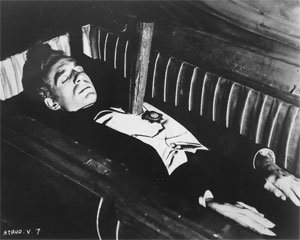There was a really strange story in the news today. Pam Babcock spent two years in her bathroom and was rescued when her boyfriend called for medical assistance because she was stuck to the toilet. Authorities are guessing she sat on the toilet for a month, so her skin actually adhered to the surface. The boyfriend, Kory McFarren, was arrested for mistreatment of a dependent adult, because he didn’t seek help sooner. Babcock was afraid to leave the bathroom, so McFarren brought her food and water and tried to coax her from the bathroom.
There was no speculation regarding the mental condition which might have kept Babcock prisoner in her bathroom for two years. I’ve heard of people with obsessive compulsive disorder who become so enslaved by their compulsions they can no longer leave the house, or certain rooms. It may have been a phobia, such as Agrophobia, which caused her to stay sealed in the bathroom.
As a writer, I find mental disorders which affect human behavior fascinating. Dean Koontz has included obscure physical or mental ailments into his stories, with characters that are allergic to the sun, or suffering debilitating phobias. I also remember a movie called Copy Cat, in which Sigourney Weaver suffered agrophobia and she was trapped in her house while a killer stalked her. Even with her life at stake, she couldn’t bring herself to cross the threshold of her front door.
You may have heard of a few of these phobias, but if you’re looking for a character quirk or plot device, consider incorporating one into your story.
“Phobia: is an irrational, intense, persistent fear of certain situations, objects, activities, or persons. The main symptom of this disorder is the excessive, unreasonable desire to avoid the feared subject. When the fear is beyond one’s control, or if the fear is interfering with daily life, then a diagnosis under one of the anxiety disorders can be made.” Wikipedia
The Phobia List
Air- AnemophobiaAirsickness- Aeronausiphobia
Alcohol- Methyphobia or Potophobia
Alone, being- Autophobia or Monophobia
Alone, being or solitude- Isolophobia
Amnesia- Amnesiphobia
Animals- ZoophobiaAnts- Myrmecophobia
Anything new- Neophobia
Asymmetrical things- Asymmetriphobia
Automobiles- Motorphobia
Bald people- Peladophobia
Bathing- AblutophobiaBicycles- Cyclophobia
Birds- Ornithophobia
Black- Melanophobia
Blood- Hemophobia, Hemaphobia or Hematophobia
Blushing or the color red- Erythrophobia, Erytophobia or Ereuthophobia
Body odors- Osmophobia or Osphresiophobia
Books- Bibliophobia
Bums or beggars- Hobophobia
Buried alive, being or cemeteries- Taphephobia or Taphophobia
Chickens- Alektorophobia
Child, bearing a deformed; deformed people- Teratophobia
Children- PedophobiaChoking- Anginophobia
Chopsticks- Consecotaleophobia
Church- Ecclesiophobia
Clocks- Chronomentrophobia
Clouds- Nephophobia
Clowns- CoulrophobiaCorpses- Necrophobia
Creepy, crawly things- Herpetophobia
Criticism- Enissophobia
Darkness- Achluophobia or Myctophobia, or Scotophobia
Daylight or sunshine- Phengophobia
Decisions: making decisions- DecidophobiaDogs or rabies- Cynophobia
Dolls- Pediophobia
Drafts- Aerophobia or Anemophobia
Dreams- Oneirophobia
Drinking- Dipsophobia
Eating or swallowing- Phagophobia
Eight, the number- Octophobia
Everything- Panophobia, Panphobia, Pamphobia, or Pantophobia
Filth or dirt- Rhypophobia
Fire- Arsonphobia or Pyrophobia
Fish- Ichthyophobia
Flowers- Anthrophobia or Anthophobia
Flutes- Aulophobia
Flying- Aviophobia or Aviatophobia or Pteromerhanophobia
Germs- Verminophobia
Ghosts- Phasmophobia
Gravity- Barophobia
Heights- Acrophobia, Altophobia, Batophobia, Hypsiphobia or Hyposophobia
Hell- Hadephobia, Stygiophobia or Stigiophobia
Homosexuality or of becoming homosexual- Homophobia
Horses- Equinophobia or Hippophobia
Hospitals- Nosocomephobia
Ignored, being- Athazagoraphobia
Imperfection- Atelophobia
Kissing- Philemaphobia or Philematophobia
Knees- Genuphobia
Light- Photophobia
Marriage- Gamophobia
Moon- Selenophobia
Mother-in-law- Pentheraphobia
Moths- Mottephobia
Mushrooms- Mycophobia
Noise- Acousticophobia
Odors or smells- Olfactophobia
Old people- Gerontophobia
Open spaces- Agoraphobia
Opinions- Allodoxaphobia
Parents-in-law- Soceraphobia
Peanut butter sticking to the roof of the mouth- Arachibutyrophobia
Place: locked in an enclosed place- Cleithrophobia, Cleisiophobia, or Clithrophobia
Rain- Ombrophobia or Pluviophobia
Reptiles- Herpetophobia
Responsibility- Hypengyophobia or Hypegiaphobia
Self, being dirty- Automysophobia
Self, being oneself- Autophobia
Self, being seen or looked at- Scopophobia or Scoptophobia
Self, being touched- Aphenphosmphobia
Sleep- Somniphobia
Spiders- Arachnephobia or Arachnophobia
Stage fright- Topophobia
Staying single- Anuptaphobia
Stealing- Cleptophobia or Kleptophobia
Sun or sunlight- Heliophobia
Symbolism- Symbolophobia
Thinking- Phronemophobia
Thunder- Ceraunophobia
Trees- Dendrophobia
Trembling- Ttremophobia
Ugliness- Cacophobia
Voices or noises, speaking aloud or telephones- Phonophobia
Voids or empty spaces- KenophobiaWashing- Ablutophobia
Wasps- Spheksophobia
Water- HydrophobiaWork- Ergophobia or Ponophobia
Worms- Scoleciphobia
Worms, being infested with- Helminthophobia
Wrinkles, getting- Rhytiphobia
Many of us might suffer a fear of enclosed spaces or heights. A few suffer a fear of marriage, wrinkles or responsibility. I think I have a phobia of clowns, even if they don’t send me screaming from the circus tent. Some phobias are humorous, like a fear of old people, mother-in-laws or the number 8. But could you imagine a fear of drinking, being yourself or sleeping? Well, that’s the point really, imagine if your characters had to live with any of these phobias and see where it takes you. Happy Writing!











